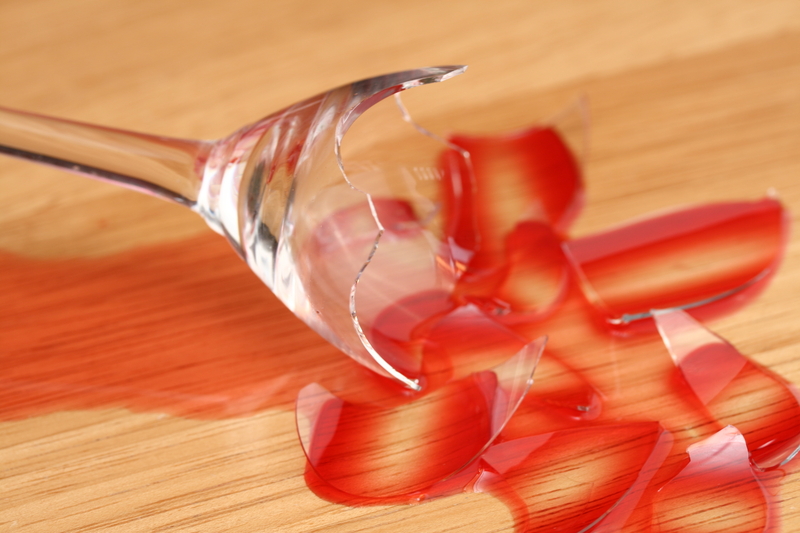Conquer Mould on Window Sills with These Easy Steps
Posted on 28/06/2025
Conquer Mould on Window Sills with These Easy Steps
Mould on window sills is a common nuisance faced by homeowners and renters alike. Besides being unsightly, mould can pose serious health risks and damage your property if not dealt with promptly and effectively. Are you fed up with trying to get rid of those pesky black or green patches that keep reappearing on your window ledges? Don't worry--you're not alone. In this comprehensive guide, you'll discover everything you need to know to conquer mould on window sills and prevent it from returning.
Understanding Why Mould Grows on Window Sills
What Causes Mould on Window Sills?
Mould is a type of fungus that thrives in damp, humid environments. Window sills are prime targets because:
- Condensation forms easily on glass, especially during cold weather.
- Poor ventilation allows moisture to linger near windows.
- Organic material like dust or wooden sills provides food for mould spores.
When warm, moist air meets a cold window pane, water droplets form and drip onto the sill. If this moisture isn't wiped away or dried quickly, it can lead to mould growth. Over time, persistent dampness combined with lack of airflow creates the perfect breeding ground for mould.
Why You Should Address Mould Immediately
Ignoring mould on window sills isn't just a matter of aesthetics. Here's why you should act fast:
- Health risks: Mould releases spores that can trigger allergies, asthma, and other respiratory issues.
- Property damage: Mould can stain and rot window sills, particularly those made of wood or painted surfaces.
- Spread: If left unchecked, mould can spread to curtains, walls, and even clothing.

Step-by-Step Guide to Remove Mould from Window Sills
1. Gather Your Supplies
Before you start tackling the mould on your window ledges, assemble everything you need for the job. You'll require:
- Protective gloves and mask (to prevent inhaling spores)
- Safety goggles (optional but recommended)
- Old towels or paper towels
- A bucket for mixing your cleaning solution
- Scrubbing brush or old toothbrush
- Spray bottle
- Cleaning solutions (see suggestions below)
- Microfiber cloths for drying
2. Choose an Effective Cleaning Solution
There are multiple ways to eliminate mould from window sills. Some of the most effective and affordable options include:
- White vinegar: A natural and popular mould killer. Pour undiluted vinegar into a spray bottle.
- Baking soda: Mix with water to create a paste, especially useful for stubborn stains.
- Hydrogen peroxide (3%): Pour into a spray bottle and apply directly to the mould.
- Commercial mould removers: There are several available in hardware stores. Opt for one labeled as safe for household use and surfaces.
- Bleach solution: While effective, be cautious. Mix 1 cup of bleach to 4 liters of water. Be aware that bleach can discolor some materials and should only be used in well-ventilated areas.
Note: Never mix bleach with ammonia or vinegar, as it can produce toxic fumes.
3. Prepare the Area
To ensure the safest and most effective cleaning process:
- Open windows for ventilation.
- Remove any nearby objects such as curtains or blinds to avoid contamination.
- Place old towels under the window sill to catch drips and loose mould.
4. Remove Loose Mould First
Carefully wipe down the window sill with a dry disposable cloth or paper towel. Do not brush the area while dry, as this can release spores into the air.
5. Apply Your Chosen Cleaning Solution
Spray or apply your cleaning solution liberally onto the affected area. Let it soak for at least 10-15 minutes; this gives it time to penetrate the surface and kill mould spores.
- For vinegar or hydrogen peroxide, a direct spray works best.
- If using a baking soda paste, spread it onto the area with a brush or cloth.
- For bleach-based solutions, use with care and rinse thoroughly after.
6. Scrub Away the Mould
Use a scrubbing brush or old toothbrush to thoroughly clean the mould off the sill. Pay special attention to corners, cracks, and any grooves where mould may hide.
- Start gently to avoid damaging paint or wood.
- Repeat the soaking and scrubbing process if necessary.
7. Rinse and Dry the Area
Wipe clean with a damp cloth to remove any chemical residue or remaining mould. Make sure to completely dry the surface with a clean microfiber cloth to discourage regrowth.
- A damp window sill can invite mould back--so thorough drying is key.
8. Discard Cleaning Materials Safely
Dispose of any paper towels, used cloths, or sponges in a sealed bag. Wash reusable items in hot water and leave them to dry completely before reuse.
How to Prevent Mould from Returning on Your Window Sills
Improve Ventilation
Mould thrives where the air is stagnant. Ensure good regular airflow by:
- Opening windows daily when weather permits.
- Using extractor fans in kitchens and bathrooms.
- Arranging furniture so it doesn't block air vents or windows.
Reduce Condensation Build-Up
Condensation is the silent culprit behind most mould problems on window sills. Here's how to combat it:
- Wipe down windows and sills each morning, especially in colder months.
- Keep blinds or curtains open during the day to allow light and air to circulate.
- Install double glazing or use insulating window film to minimize temperature differences.
- Don't dry clothes on radiators or near windows.
Monitor Indoor Humidity
Mould loves environments with a humidity above 60%. You can combat mould on window frames by:
- Using a dehumidifier in rooms prone to dampness.
- Keeping humidity levels between 30-50% (use a hygrometer to monitor).
- Running a fan or air conditioner when possible (especially in warmer climates).
Keep Sills and Frames Clean
Routine cleaning makes it harder for mould spores to take hold. Make window sills part of your weekly cleaning regime.
- Wipe with a mild detergent, vinegar solution, or specialized anti-mould spray.
- Remove dirt, dead insects, and dust that can serve as mould food.
- Inspect regularly for early signs of recurrence.
Address Leaks and Structural Issues
If you keep finding persistent mould on your window ledges despite your best preventative efforts, check for leaks or gaps in the window frame.
- Repair or reseal any cracks allowing water ingress.
- Paint or varnish wooden sills to make them more moisture-resistant.
Upgrade to Mould-Resistant Materials
If your window sills keep succumbing to mildew, consider replacing them with mould-resistant materials like PVC or treated composite, particularly in bathrooms or basements.
Frequently Asked Questions About Mould on Window Sills
1. Is mould on a window sill dangerous?
Yes. While a small patch of mould is usually easy to remove, prolonged exposure to mould spores can cause adverse health effects--especially for children, elderly people, and those with compromised immune systems or respiratory issues.
2. Can you just paint over window sill mould?
No. Painting over mould will not stop it from spreading and actually traps moisture, making the problem worse in the long term. Always clean and dry the area thoroughly before repainting.
3. Does sunlight kill mould on window sills?
Sunlight can help discourage mould growth by reducing humidity and drying out surfaces, but it won't kill established mould colonies. Cleaning is still necessary.
4. Can vinegar remove mould from wooden window sills?
Absolutely. White vinegar is safe for most wooden surfaces and naturally kills many types of mould. Always test a small hidden spot first to avoid potential discoloration.
5. What if mould keeps coming back?
Persistent recurrence means you haven't addressed the underlying cause--too much moisture or poor ventilation. Review your condensation control strategies or consult a building professional for deeper issues like leaks.

Professional Help vs DIY Mould Removal on Window Sills
When to Call in the Experts
Small mould outbreaks on window sills are typically safe for DIY removal. However, consider professional mould remediation if:
- Mould covers an area larger than 1 square meter.
- You suspect hidden mould behind walls or in cavities.
- Mould keeps regrowing despite your efforts.
- You have allergies or respiratory conditions.
*Always prioritize your health and safety--if in doubt, seek expert help.
How Professionals Remove Mould from Window Frames and Sills
Professionals use specialized cleaning agents and HEPA-filtered vacuums to remove spores from the air. They can also perform moisture assessments, repair structural problems, and advise on long-term solutions to prevent future outbreaks.
Summary: Your Path to Mould-Free Window Sills
Mould-free window sills are achievable with a bit of knowledge and regular maintenance. By following these easy steps--from identifying the cause right through to using the best cleaning techniques--you can say goodbye to mould and enjoy a fresher, healthier home.
- Act quickly to remove and dispose of mould safely.
- Invest in prevention: ventilation, regular cleaning, and humidity control are key.
- Upgrade materials or call in professionals if the problem is persistent.
With these tips and tricks, you have everything needed to conquer mould on window sills--and keep it away for good. If you found this guide helpful, share it with friends or neighbors who might be fighting the same battle!
Stay proactive, and your window sills will stay bright, healthy, and mould-free year-round.




